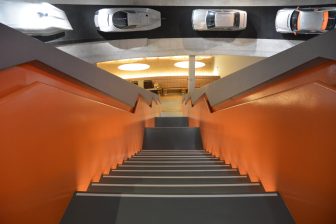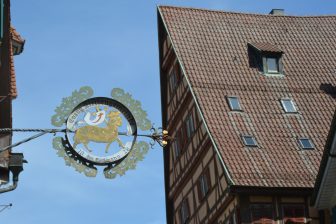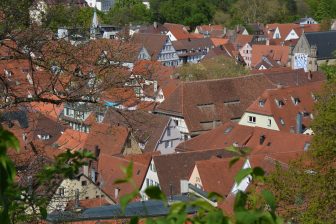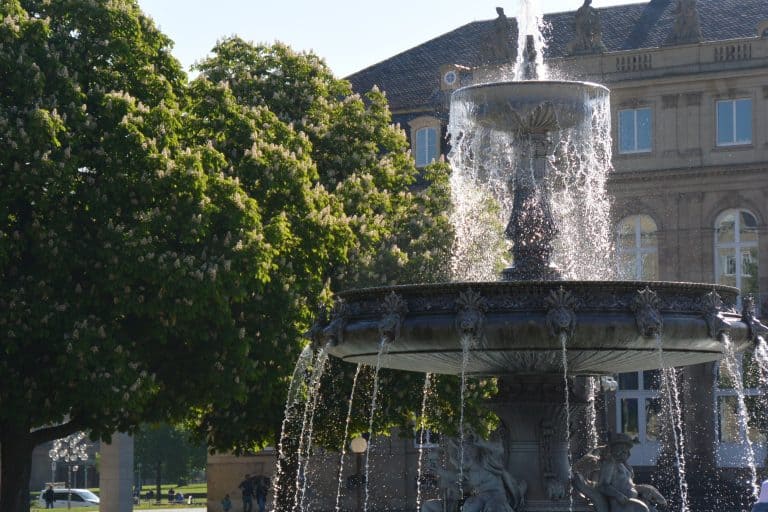
[Apr. 2025] On our last day in Stuttgart, southern Germany, I was planning to relax until check-out, but my husband, unusually, said, “Let’s go out for a bit,” so we headed for Schlossplatz in the centre of town.
Schlossplatz means Palace Square, and according to online information, it’s affectionately known as the town’s “living room.”
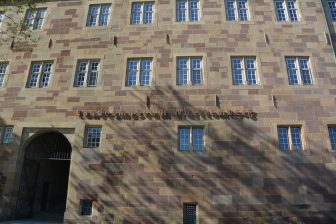
It was built in the 18th century as part of urban planning under Wilhelm I.
It’s a spacious square surrounded by historic buildings.
For example, the New Palace.
A Baroque-style building from the late 18th century, it was apparently a symbol of the power of the Duchy of Württemberg at the time.
It’s now a state government facility, so it seems you can’t go inside.
And then, southeast of the square, there’s the Old Palace.
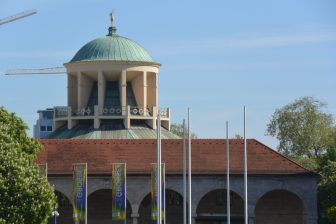
This building dates back to the 10th century and is now a state history museum.
Across the square, far away, I could see a dome.
I thought it might be a mosque, but it turned out to be the Museum of Modern Art, a contemporary art exhibition venue.
The golden deer atop the dome was particularly striking.
There was another art museum on the south side of the square, and we actually only used the toilet there and didn’t see inside, but it also seemed to be showcasing contemporary art.
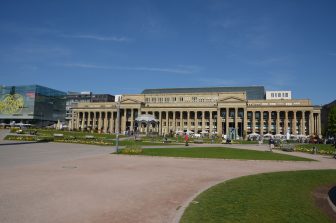
But the building that looked the most imposing and largest was the Königsbau shopping centre.
Schlossplatz is connected to Königstraße, the town’s largest shopping street.
After walking around the square, we stopped by the church a little way in.
It’s called Stiftskirche, and its unbalanced tower is its landmark.
There were leaflets in Japanese and Italian there.
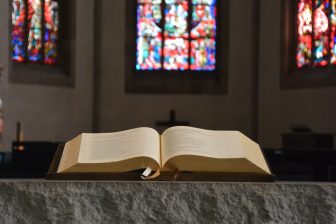
According to the legend, it originated as a village church with a single nave from the 10th or 11th century, and reached its current size by 1495.
The first Protestant sermon in the region was preached there in 1534, and it has been a Protestant church ever since.
After being largely destroyed and reduced to rubble during World War II, it was rebuilt in the 1950s in the style of the time.
Further renovations were made between 1999 and 2003, resulting in a fairly modern interior.
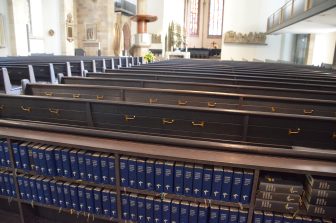
The benches were black, and the rows of gold hooks for hanging bags or clothes looked strangely like rows of coffins.
The red stained glasses on the altar were beautiful, though.
But the church had an overall bleak impression.
However, it seems that the people of Stuttgart are not particularly religious, and one of the main roles of this church is as a concert venue for the music of Bach and Brahms.

